|
|
         |
|
|
 |
 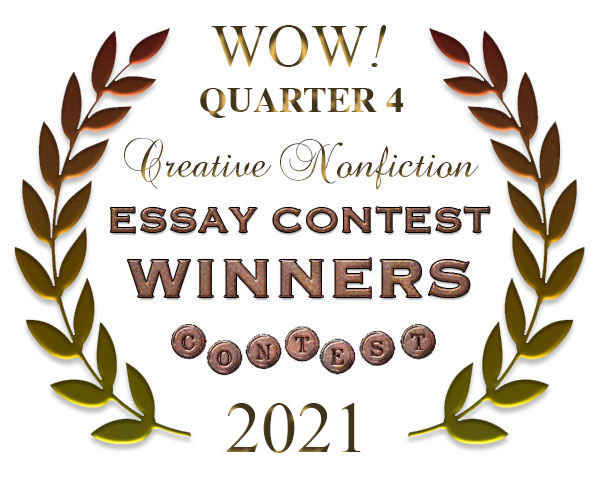
|
 |
| |
|
|
| |
|

We had an open topic this season. Our only guidelines were that submissions be nonfiction with a minimum of 200 words, and a maximum of 1,000 words.
|
| |
|
THANK YOU TO OUR CONTEST SPONSOR:
It is the sincere desire of our sponsor that each writer will keep her focus and never give up. Mari L. McCarthy has kindly donated a prize to each winning contestant. All of the items in her shop are inspiring and can help you reach your writing goals. Write on!
|
| |
|
Note to Contestants:
We want to thank each and every one of you for sharing your wonderful essays with our judges this season. We know it takes a lot to hit the send button! While we’d love to give every contestant a prize, just for your writing efforts, that wouldn’t be much of a competition. One of the hardest things we do after a contest ends is to confirm that someone didn’t place in the winners’ circle. But, believe it when we say that every one of you is a true winner for participating.
To recap our current process, we have a roundtable of 8+ judges who score equally formatted submissions based on: Subject, Content, and Technical. If a contestant scores well on the first round, she receives an e-mail notification that she passed the initial judging phase. The second round judging averages out scores and narrows down the top 20 entries. From this point, our final judges help to determine the First, Second, and Third Place Winners, followed by the Runners Up.
As with any contest, judging so many talented writers is not a simple process. With blind judging, all contestants start from the same point, no matter the skill level, experience, or writing credentials. It’s the writer’s essay and voice that shines through, along with the originality, powerful and clear writing, and the writer’s heart.
We hope that you continue to enter so we can watch you grow as writers and essayists, because each season is a rebirth of opportunity!
 Now on to the winners!
Drum roll please....
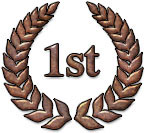
1st Place: Frances Hider
Scotland
Congratulations, Frances!
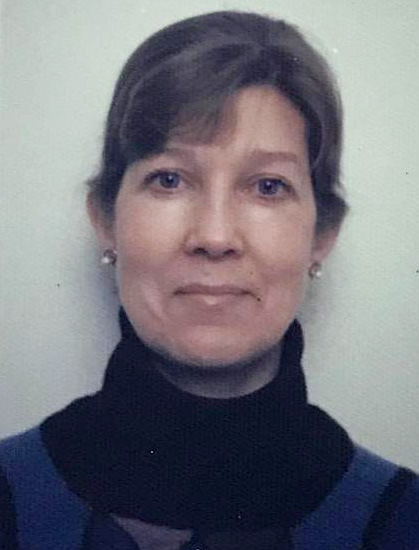
Frances’s Bio:
Frances Hider is a creative nonfiction writer who has a particular interest in the overlap of nature with art and literature, science and medicine. Her essay, “The Unintentional Contortionist” won the 2016 Frankenstein Workshop of Creation, Writing Competition. Her essays have appeared in the Tyne & Esk Writers anthology, From the Lighthouse, and online with the Scottish Book Trust as well as with the Institute for Advanced Studies in the Humanities’ “Dangerous Woman Project” through Edinburgh University. Frances lives in Scotland.
Printable View
Safe Haven
By Frances Hider
The lion—for this is what it looked like—streaked across the grassland. His lithe, golden body in pursuit of the long-legged creature who zig-zagged ahead of him—a gazelle.
The dog—for this is what it turned out to be—abruptly veered from the chase and sped eastward towards the town; his canine form disappearing over the crest of the land. The gazelle, puzzled perhaps, shook off the mantle of illusion and became a deer.
In the split second it took to catch the movement in the corner of my eye, to turn my head, to take in the chase, I failed to process reality. I transformed the dog to a lion, the deer to a gazelle and the fallow, ragged land of the neighbouring field to the grasses of the African savanna. I saw what was there and I saw what wasn’t.
And this is how I see you. A fleeting presence, glimpsed in my periphery. A tree transformed, its branches flapping like an unzipped jacket in the early morning breeze, or after dark, when the cast of light thrown by a torch momentarily embodies you. There and not there, you dally in the shadow land of my mind. A perfect marriage of contradictions. Always present yet absurdly—absent.
The deer reappeared in the lower woodland of our garden a day later. She was a roe deer, relatively common in this part of the Scottish Lowlands. She was lean and angular, her coat still sporting winter’s grey overtones. I sensed her presence before I saw her. As if her body’s mass distorted atmospheric pressure, altering the woodland character, imbuing shrub and tree with comprehension of another in their midst.
She sheltered beneath a canopy of branches whose leaves hung damp and dripping in the chilly May morning air. She had chosen the dim recess of a dense planting of trees. Here, among the thick, hoary trunks of Scots Pine and Silver Birch she merged with the gloom; a shadow within the shadows. The next day, I would find the print of her hooves, the dual elongated, heart-shaped cleats impressed in the soft brown earth, the mulch of winter leaves trampled.
At the gate between the upper garden and lower woodland, the spaniel at my side whimpered in recognition of an alien scent. I flicked open the gate latch, kicked my boot at the bottom slat to free the rain-swollen wood from the post. As I stepped over the threshold, the deer stepped from the shield of the trees into the open. Silence. Time stilled. And the air thrilled between her world and mine.
Separated, by the wood chipped path, a spread of long-stemmed grasses littered with nettles and a thick-leaved Rhododendron yet to bloom, we regarded each other. Me, uncertain, she ready to flee. Me, wishing you were here to guide us. She, set to career into the confines of fence, gate and post, should the spaniel run loose or should I get too close and reduce the critical distance of her determination between us. Finally, we, the spaniel and I, kept to the path and passed through what is usually ours but which was—for now—hers.
At one time, this patch of solid earth was also yours. And although your hand is everywhere—in the trees sheltering the garden from weather extremes, in the lay of the paths, the position of the old hen shed, the choice of plant and shrub—it seems ownership of the land is transient; a thing of the moment. Yet, while the deer watched me and the spaniel from her safe distance, you flickered at the edge of my vision, the ghost of a memory projected into the familiar landscape, a sort of reliving, a not forgetting of you...here and of us.
Yesterday’s chase, I guessed, began southeast of us in a parcel of agricultural land several acres wide, where a dip in the terrain often lends shelter to a small posse of roe deer, grazing in ones and twos, inhabitants of a band of open field and light woodland between the main road and the town. This is where the deer was likely headed, her presence in our woods an interval in the greater drama of her life.
An hour or two later, I returned alone to herd her out into the fields. In a folly, where I played the clumsy Caliban and she the nimble Ariel, I encouraged her through the wide-open field gate whereupon, without hesitation, she circled back, leapt the side fence to the woodland and disappeared through the bushes to her original safe haven. We replayed this pantomime twice over until I accepted defeat and left her beneath the leafy canopy.
That evening, I spotted her hunkered down against a hillock near the dense planting of trees. She was part hidden by the long-stemmed grass but her head silhouetted in the dusk turned towards me. Her large oval ears twitched as she listened to the crunch of my boot on the wood chip path. The next morning, she was gone.
A dry shallow groove etched in the soil where she had slept, remained. I crouched down to run my fingers over the earth imagining the shape of her as another memory stirred. The memory of another bed, of crinkled sheets where I imagined the shape of you for three whole days after your death. The bed, the sheets, an imprint in the dust, of a memory, of a safe haven—of a husband. This then is my reality.
***
What Frances Won:


2nd Place: Carol Ovenburg
Talent, Oregon
Congratulations, Carol!
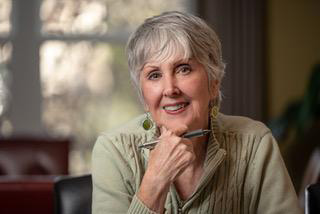
Carol’s Bio:
Carol Ovenburg has been a visual artist for over 40 years, a writer for over 20 years. She is also a Narrative Life Coach helping people find and change their self-limiting stories through writing. She loves writing creative non-fiction and is currently finishing her first memoir titled, Pearls about her struggle growing up the daughter of an alcoholic mother with borderline personality disorder. She is temporarily living and working in the hills of Ashland, Oregon with her partner awaiting the re-build of their home consumed by the Almeda fire in Talent, Oregon, September 8, 2020. In her spare time, she reads and screens plays for the Ashland New Plays Festival. Travels with her partner around the country for Argentine tango dance festivals (festivals for the double vaccinated). Serves on the architectural review board for her Talent neighborhood. Designs kitchens and interiors for other fire victims. She is in two writing groups and loves taking writing classes and on occasion she finds the time to sit down with a good book.
Printable View
Mother Bones
By Carol Ovenburg
You’ve spent three years painting larger-than-life scale people in park settings – Your Urban Park series capturing the urban feel of Seattle parks. You’ve painted your subjects in striped t-shirts, cut-off jeans, bathing suits, running shoes. Painted bling and cigarettes. You painted a couple eating popsicles. Painted a couple arguing. A couple sitting by the lake. Many like these. Twenty-six paintings in all. Several commissions. Many shows.
You’re ready to push the boundaries of your art.
What if you paint the essence of people? Remove their identity? Make them abstract? Make them universal?
What if you pierce the adorned body parts? Dig underneath the skin through layers of brain and brawn?
Down to the bones.
You begin with pencils on paper.
You plunge head-first into graphite – the way you dive deep when you write. You bury yourself in the act of drawing.
Shapes resembling bones.
Dead bones. Live bones. Luminescent bones.
Bones with nodules illuminated.
Illuminated nodules and spurs highlighted.
Bones flying, floating bones pushing, pulling, singing and howling.
Long bones, hip bones, finger bones, backbones.
Dancing – white against black – drawn and shaded ribbons and knotted fabric penciled into swirls that kiss the edge of a bone.
Or vices that bind two bones together.
Or slings protecting two bones from falling.
Or jaws that pry bones apart.
You draw the dynamics of family.
Their baggage. Illusions. Delusions.
Their Distractions.
Their pain and their joy.
You dive deeper than dreams
Into the graphite ground
Burnt black as magic is black
The color of death.
You find bones in the dark and morbid underground
Waiting for you – memories of foul play.
Bones. Hear them clack as they bump one another. Making noise. Watch ribbons ripple and fly, hear the stretch of fabric just before it rips and snaps. Hear the grunts from tension and the whoosh as bones fall. Feel the burden of heavy loads. Hear the crumpling paper, the buzzing of fan shapes, the flirtations of bone fragments. Feel the weight. Feel the perishable peeling away of graphite layers rubbed out to create chaos at the edges.
A suite of drawings finished.
Now you paint. Paint on canvas with a fan brush.
A larger field.
An excavation site.
Mix complementary colors – ultramarine purple and yellow ochre.
Tinge bones dug from earthen graves the color of dried dirt.
Paint the light snagged by bone gnarls and bring them alive with white.
Then plow into your psyche and dig for more bones.
Dig deep into the dark dead earth and uncover the mother-bones
Mother-bones haunting you.
The other day you woke early
With another lucid dream –
The sort that feels so real you question
The reality of wakefulness.
Your mother called and said she needs you to go to her.
She needs you to cook for her.
She’s just too sick.
She begged.
You said no.
You woke remembering you said no.
You knew what it meant to cook for her.
It meant she is hungry.
It meant she needs to feed off of you again.
You said no.
There was once meat on your bones.
Meat that made you strong.
The kind of meat mothers feast on.
Suck on until nothing is left but bare bones.
You can’t separate the bones – hers from yours.
You paint them all.
All your female archetypes.
Every dead writer, dead painter, every dead mother and daughter.
You plop gobs of paint on your palette –
Gobs of buttery paint luscious enough to lick
Like a Wayne Thiebaud painting of pie.
Alizarin Crimson, Viridian Green, Ultramarine Blue mixed
To form a near-black not quite the color of death.
This is your ground. Fill in the spaces between the bones
With a number 10 hog-hair bristle brush.
Let the tortured female bones lay on top
Alive with your nightmares.
In the meantime, you reach the semi-finals for Seattle’s Best with your Urban Park Paintings. Swedish Hospital buys two of your large paintings and two pastels for the new hospital cancer wing. The art curators for Seattle’s Best like the work you submitted from your slides. But during their visit to your studio they notice your bone paintings. Your shifting focus confuses them. They reject you.
You are crestfallen. Should you have stayed in the safe zone? Made a name for yourself? Become a caricature of yourself? Stunt your growth? To get into the finals of Seattle’s Best?
Fuck them. You’re onto something.
Bones identify. They tell the tales.
They have a voice. A loud voice.
You hear your childhood torment in these bones.
You hear Mother bones wail.
***
What Carol Won:

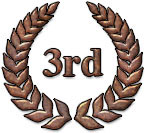
3rd Place: Tatum Willow Brown
Nashville, Tennessee
Congratulations, Tatum!
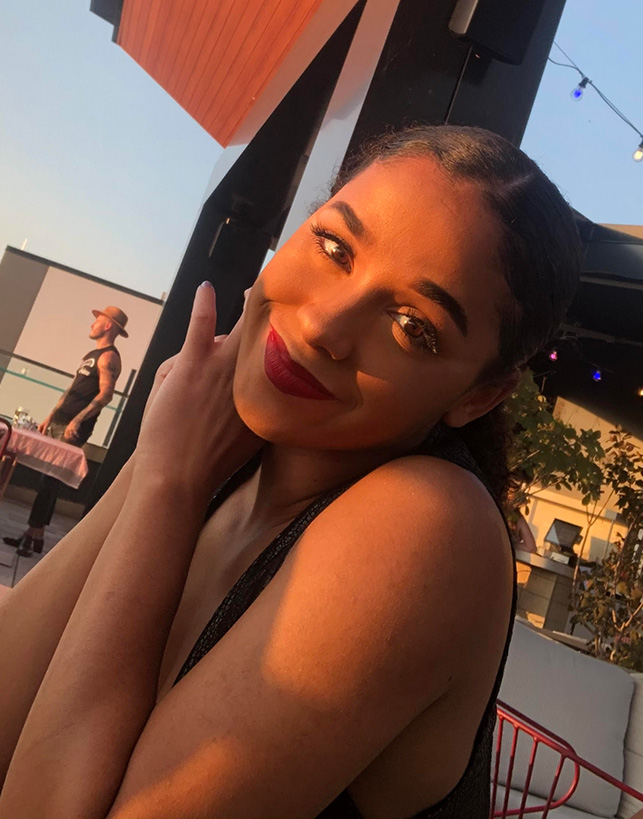
Tatum’s Bio:
Tatum Willow Brown (she/her) is a 20-year-old writer from Nashville, Tennessee. She draws inspiration for her work from the diversity of her surroundings, and loves to incorporate the intricacies of intersectionality of sexuality and culture into her pieces. As a queer, black-biracial woman in the south, she believes in the importance of shedding light on the stories and experiences of shadowed groups in society. She is currently pursuing a degree in Public Health, Epidemiology, and Communications, and spends much of her freetime with her pet rabbit, Carmelo.
Printable View
You is Strong
By Tatum Willow Brown
When I was little I thought that strong was for boys. Strong was the cartoonishly muscular man in the Saturday morning TV show who squatted with ease with dumbbells fixed on his shoulders. Strong was Popeye and Superman. When I was called strong for the first time, I glanced around the room to grasp whether or not it was a joke. My mom was being domestically abused by my father, and my siblings and I were removed by force early one morning when the police showed up in response to an anonymous phone call. I’d play the scene out in my head in the years to come, dramatized for effect like a movie; I’d be led out of the house with enough time to grab my teddy bear and offer an impassioned wave goodbye to my dad. I didn’t understand the weight of it all. When we arrived at the women’s shelter in the next city over, I picked some clothes out of a big bin with my mom. They smelled funny, but I was happy to have a too-small nightgown pulled over my head because it was bright green with Tinkerbell on it. None of this registered as anything other than an adventure. “I want you to know how strong you guys are,” a counselor would tell me and my siblings as we sat in a playroom, eyeing each other for a sense of how to react. I was seven years old.
In the black community, strength is not a character trait you get to develop overtime. It is not something that we are given grace to learn. It is an innate attribute. We teach each other that this is true. When our children cry or complain, some parents may choose discipline in a way that seems cold and harsh. Kids are “bopped,” “whooped,” and spanked without a moment of consideration. In more ways than one, this is a protective measure. If you can drill resilience and obedience into your child early on, the idea is that you may save them from being crushed by the inevitable weight of social inequality. Think of it like a very intensive college-prep program. Sure, the classes are rigorous and students sacrifice nights of rest for high marks on the material, but, in the end, if you ask a kid who did college-prep how well they’re doing in college, it’s common to be met with an excellent track record and lots of “we learned this in high school.” Such is the conditioning of the black child.
We cite strength as a mantra in our everyday lives. It’s in our music, our language. We tend to paint rest and relaxation as a luxury only for those “strong” enough to earn it. “I grind while you sleep” is a common phrase used by black youths to idolize the concept of working two jobs at once. We are gaslighted into believing that we must be enduring pain to be successful, and this isn’t faulty logic when you consider the years post-emancipation where entire generations of black Americans had to dedicate their lives to accumulating some sort of foundational wealth for themselves and those to come.
This mindset isn’t simply one we’re expected to adopt by our own community, we are assumed to be resilient by the world around us as well. Running track in middle school, I had a knack for devastating the other girls at the last leg of my races, always giving it my all and sprinting far past the lead to finish first on most occasions. My coach called it my “kick,” and I was always very proud of myself because I understood the mind-body coordination it took me to pull it off. “You make it look so easy,” I was told regularly. When I was in 8th grade, I began to become more familiar with a trope that was rampant within the white community; that black runners had an evolutionary advantage over white ones. We were made out to be genetically different in order to console the white kids who lost to us. I remember feeling deeply invalidated by this.
When members of the white community go out of their way to emphasize the strength of black individuals, what may come from a place of awe can often end up dismissing or oversimplifying the complexity of the black experience. Since starting college and being educated in a predominantly white setting for the first time, I’m forced to grapple with the reality that my endurance is seen as an accessory to my race. I’m always hesitant to share personal examples from my life in class discussions out of disdain for the inevitable “yes, queen!” or “strong-black-woman” oriented comment that will undoubtedly follow. It’s not about wanting to be recognized as separate from the black community, it is the fact that our pain is over-generalized, romanticized, and treated as some golden-ticket novelty to the rest of society.
I used to be very afraid to cry in front of anyone. There are times where I’m still immensely hesitant to ask for extended deadlines or additional resources when I need them within an academic setting. There have been times where I’ve stayed up multiple consecutive nights after working double shifts to pay my bills just to write essays due the next morning—and get As on them, too. I’ve seen the dead black bodies of men, women, and children go viral on instagram and have had to go to birthday parties right after. Even still, I am learning the urgent importance at hand with undoing the generalizations of the black community—the urgency to unteach ourselves, our family, and our children the need to be stone all the time, and to advocate for a world where we don’t always have to be. A woman who is always expected to be strong should also be allowed to be exhausted.
***
What Tatum Won:
 RUNNERS UP:
Congratulations to the runners-up! It was very close, and these essays are excellent in every way.
Click on the titles to read:
Unlatch by Penelope Richards, Houston, Texas
Snow White by Christina Rauh Fishburne, Cambridgeshire, England
My Summer of Love by Diana Friedman, Takoma Park, Maryland
Racing Heart by Melissa Knox, Essen, Germany
The Little Death by Eden McCarthy, Talent, Oregon
I Am a Doughnut Bumper by Jenna Wimshurst, UK It Happened in a Flash by Michelle Dwyer, Cedar Park, Texas
HONORABLE MENTIONS:
Congratulations to our Essay Contest Honorable Mentions! Your essays stood out and are excellent in every way.
Party at 36,000 Feet by Cathy Chapaty, Austin Texas
Now We Are Five by Barbara Olsen, Colorado
Countdown to a Parking Lot by Aubrey Binder, Warrensburg, Missouri
Matzo by Kaz Russell, UK
Angels in the Impala by Joanne Guidoccio, Guelph, Ontario, Canada
Postcard from Noe Valley by Preeti Vangani, San Francisco, California
Trail Magic by Amy Bee, Sacramento, California
Recycled Chaos: A Legacy by Angel Salvador Chiutena, Phoenix, Arizona
Teenager Jeans by Julie Lockhart, Port Townsend, Washington
The Reiki Master by Logan Pearl, Danville, Vermont
What the Honorable Mentions Won:
|
| |
|
Thanks to our Judges:
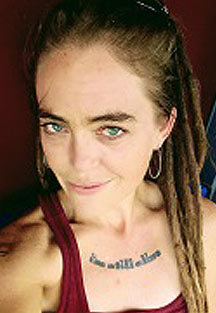
Chelsey Clammer
Chelsey Clammer Chelsey Clammer is the award-winning author of Circadian (Red Hen Press, 2017) and BodyHome (Hopewell Publications, 2015). A Pushcart Prize-nominated essayist, she has been published in Salon, Brevity, McSweeney’s Internet Tendency, The Normal School, Hobart, The Rumpus, Essay Daily, and Black Warrior Review, among many others. Her third collection of essays, Human Heartbeat Detected, is forthcoming from Red Hen Press. Chelsey received her MFA in Creative Writing from Rainier Writing Workshop. You can read more of her writing at: www.chelseyclammer.com.
-----

Melissa Grunow
Melissa Grunow is the author of I Don’t Belong Here (New Meridian Arts Press, September 2018) and Realizing River City: A Memoir (Tumbleweed Books, 2016), which won Second Place-Nonfiction in the 2016 Independent Author Network Book of the Year Awards and the Silver Medal in Nonfiction-Memoir from Readers’ Favorite International Book Contest. Her work has appeared in Creative Nonfiction, River Teeth, The Nervous Breakdown, Two Hawks Quarterly, New Plains Review, and Blue Lyra Review, among many others. Her essays have been nominated for a Pushcart Prize and Best of the Net and listed in the Best American Essays 2016, 2018, and 2019 notables. She has an MFA in creative nonfiction with distinction from National University. Visit her website at www.melissagrunow.com or follow her on Twitter @melgrunow.
-----

Sarah Broussard Weaver
Sarah Broussard Weaver received her MFA from the Rainier Writing Workshop MFA program at PLU. Her work has appeared in Full Grown People, The Nervous Breakdown, The Bitter Southerner, Brevity, Crack the Spine, and Hippocampus, among others. She lives in the hills of Portland, Oregon.
-----
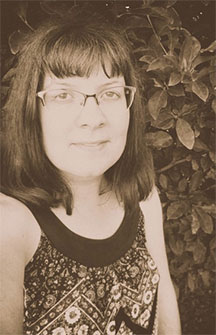
Melanie Faith
Melanie Faith is a poet, fictionist, photographer, auntie, and professor. Her craft book about how to write flash fiction and nonfiction, entitled In a Flash! was published in April 2018, and a craft book for poets, Poetry Power, was published in late October 2018 (also by Vine Leaves Press). Her historical poetry collection, This Passing Fever, set in the 1918 influenza epidemic, was published by Future Cycle press in early September 2017. Her Jane-Austen style Regency novella was also published in September 2017 by Uncial Press and RONE-award nominated. Her writing has been nominated for three Pushcart Prizes. Her short stories were recently published in Red Coyote and SunLit Fiction. Her poetry most-recently appeared in Prometheus Dreaming (May 2019), Up North Lit, Meniscus, and in Fredericksburg Literary and Art Review. Her photography recently appeared in Barren Magazine, Fourth & Sycamore, Harbor Review, Sum Journal, and And So Yeah. In 2018, two of her craft books were published, and her next book, Photography for Writers, was recently published by Vine Leaves Press. Learn more about her latest projects at: www.melaniedfaith.com/blog/.
-----
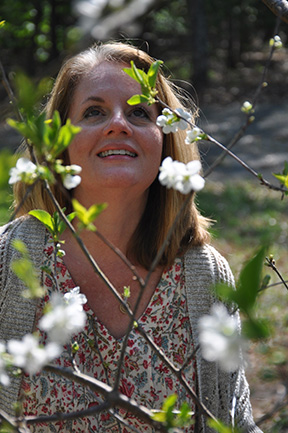
Ashley Memory
Ashley Memory lives in rural Randolph County, North Carolina, with her sculptor husband, Johnpaul Harris. When she’s not musing on a new metaphor, she’s trying to learn to drive a skid-steer loader and move earth. Her writing has appeared in many journals, magazines and anthologies, most recently in Real Simple, Wired, The Sun, The Phoenix (Issue 61), The Rumpus, County Lines, O.Henry, and Rooted in Rights. Her lyric essay, “A Tale of Two Tumbles,” won first prize in the 2020 Carolina Woman Writing Contest, and her first poetry collection, Waiting for the Wood Thrush, was published by Finishing Line Press in November 2019. She writes a column for the WOW! Women on Writing markets newsletter, and she’s currently at work on a memoir of her life in the Uwharries. Her writing has been nominated for a Pushcart Prize, and she’s twice won the Doris Betts Prize sponsored by the N.C. Writers' Network. Her first novel, Naked and Hungry, was named a finalist in the 2009 James Jones First Novel Fellowship competition sponsored by Wilkes University and was published in 2011 by Ingalls Publishing Group. For a forkful of the literary life, follow her blog, Cherries and Chekhov.
-----
Thanks to WOW Staff:
As always, thank you to the WOW! staff for your careful deliberation and attention to detail. Special thanks to Margo L. Dill, Mary Horner, and Angela Mackintosh for helping out with this contest.
-----
|
| |
|
IN CLOSING:
This brings the Q4 2021 essay contest officially to a close! Although we’re not able to send a special prize to every contestant, we will always give our heartfelt thanks for your participation and contribution, and for your part in making WOW! all that it can be. Each one of you has found the courage to enter, and that is a remarkable accomplishment in itself. Best of luck, and write on!
Check out the latest Contests:
https://www.wow-womenonwriting.com/contest.php
|
|
|
|
|